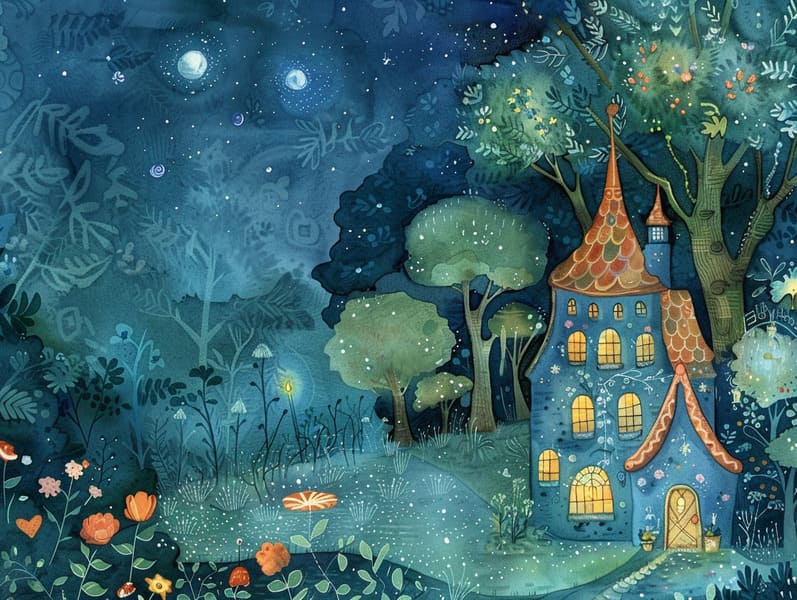The Story Behind Classic Fairy Tales with Its Timeless Grace.
The Story Behind Classic Fairy Tales with Its Timeless Grace.
Blog Article

Legendary fairy tales have historical significance. These tales have been spoken from one generation to the next millennia before they were ever published. They originated from a variety of cultures, including Indigenous traditions. They were initially told among elders, often carrying themes and messages pertaining to the societal norms and beliefs of the time.
Jacob and Wilhelm Grimm, Jacob and Wilhelm (the Grimm brothers), were among the first to gather many of these beloved narratives. Their collection, "Grimm's Children's Stories," included narratives like "Cinder Maid," "Little Brother and Little Sister," and "The True Story of Snow White," which have since become staples in the world of iconic fairy tales. Similarly, Hans Christian Andersen's magical fairy tales, such as "The Mermaid," and "The Ugly Duckling," have won hearts worldwide, ensuring their place in the pantheon of timeless fairy tales.
Though they are old, these tales remain as important as ever, especially as children's bedtime stories. These delightful tales are now available in various formats, including vividly illustrated books, magical animations, and free fairy tales online.
Their ongoing significance can be credited to several whimsical characteristics:
Key Lessons: Old fairy tales often present important moral lessons. Fairy tales like "The Boy Who Cried Wolf" teach the virtue of being truthful, while "The Hare and the Tortoise" exemplify the virtues of persistence and humbleness. These tales offer young ones clear distinctions between good and bad, shaping their moral compass in a gentle yet profound way.
Empathy and Understanding: Classic fairy tales frequently include protagonists facing challenges and struggles, motivating readers to resonate with their struggles and back their triumphs. For instance, "Beauty's Beast" reveals the importance of seeing beyond the surface to know the true character of a character, nurturing understanding and recognition.
Cultural Knowledge: Many old fairy tales are steeped in the cultural contexts from which they emerged. Discovering these tales can provide informative snapshots into different backgrounds, strengthening a sense of world awareness and awareness.
Fantasy and Imagination: The mythical elements in old fairy tales—mythical entities—activate children’s imaginations. These stories take readers to fantastical realms, provoking imaginative dreams and a sense of enchantment that remains a lifetime.
Ancient fairy tales are not only fantastical but also illuminating. They act as mesmerizing tools in enhancing various cognitive and emotional skills in young readers. When traditional fairy tales are spoken, they promote verbal skills by teaching new phrases and elaborate sentence structures. This practice also advances hearing abilities and attention span, as kids focus on every detail, anticipating to see what happens next.
Furthermore, conversing about the themes and characters of classic fairy tales can improve read more critical thinking and analytical skills. Young readers learn to find patterns, make predictions, and grasp cause and effect. These deliberations also support kids speak out their thoughts and feelings, contributing to their emotional intelligence.
In today’s digital era, the proliferation of free fairy tales online has made these narratives more attainable than ever. Websites and apps share ample collections of Grimm's fairy tales that can be experienced or heard anytime, anywhere. Fairy tales read out loud are particularly favored, offering an interactive way for young readers to experience these delightful tales. Spoken stories and read-to-me stories take characters and settings to life, often enhanced by delightful background sounds and harmonies that enhance the storytelling journey.
The everlasting appeal of ancient fairy tales lies in their ability to alter to today's society while maintaining their fundamental ideas. Contemporary updates of these stories often show more inclusive protagonists and modern settings, making them familiar to today’s audience. However, the key lessons of valour, generosity, and fair play remain unchanged, continuing to touch young readers of all ages.
Ancient fairy tales also offer a sense of coziness and familiarity. They make available a orderly narrative with a unmistakable beginning, middle, and end, often wrapping up with the conclusion of conflicts and the triumph of honesty over deceit. This uniformity can be relieving for young ones, delivering a sense of constancy in an unpredictable world.
Old fairy tales continue to spellbind and edify new generations, maintaining their enchantment and relevance in modern society. As nighttime stories for kids, they make available a perfect blend of fantasy and learning, fostering moral values, empathy, and creativity. The accessibility of internet fairy tales and the favor of fairy tales read aloud secure that these traditional narratives remain attainable to new generations.
By holding onto and circulating these fairy tales, we continue to glorify the rich tapestry of inventiveness and cultural heritage. Whether you are reading a richly illustrated book, viewing a web-based library, or hearing an spoken story, the charm of ancient fairy tales is always within reach. These narratives highlight of the continued impact of narratives and its ability to draw us together across epochs and places.
No matter if you are viewing a artistically illustrated book, exploring a online collection, or playing an spoken story, the elegance of traditional fairy tales is always within reach.
These stories point out of the continued power of fairy tales and its ability to tie us across time and space, forging a link that delights and instructs alike.